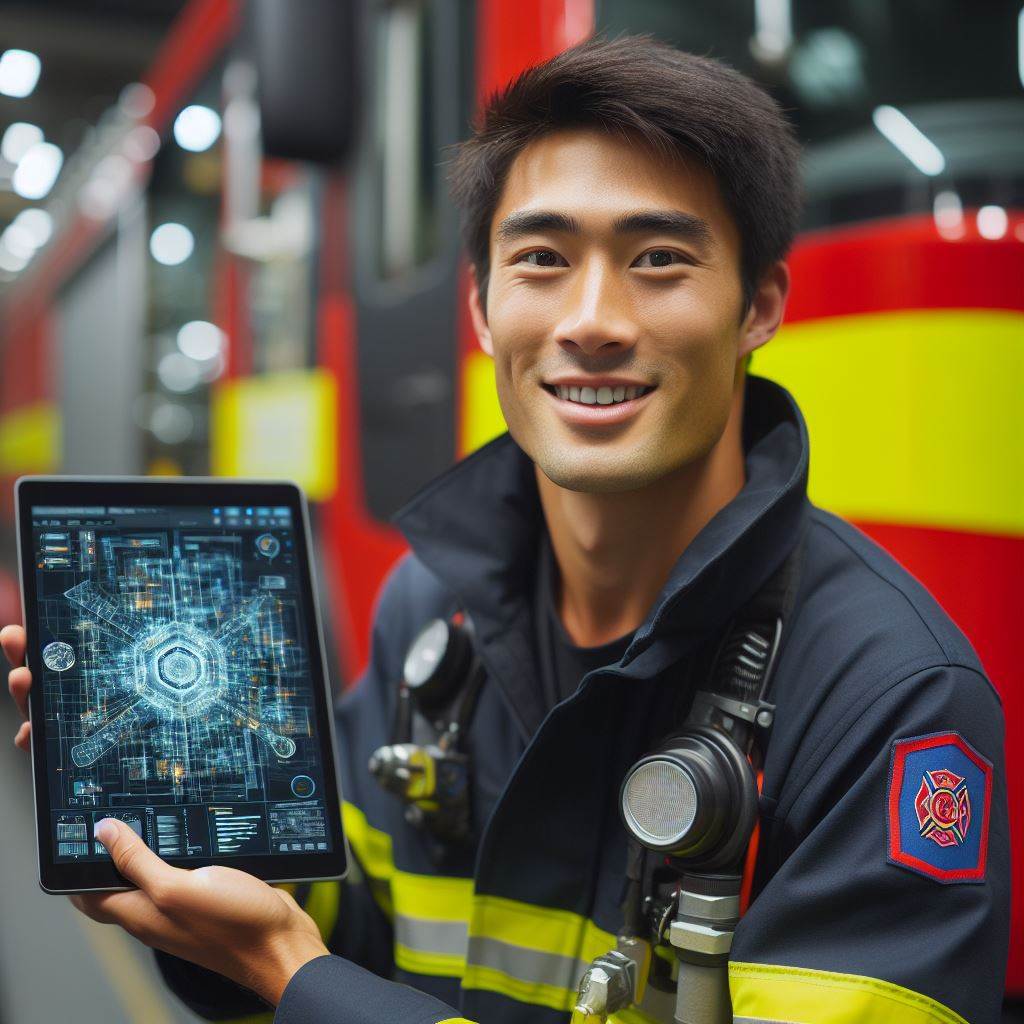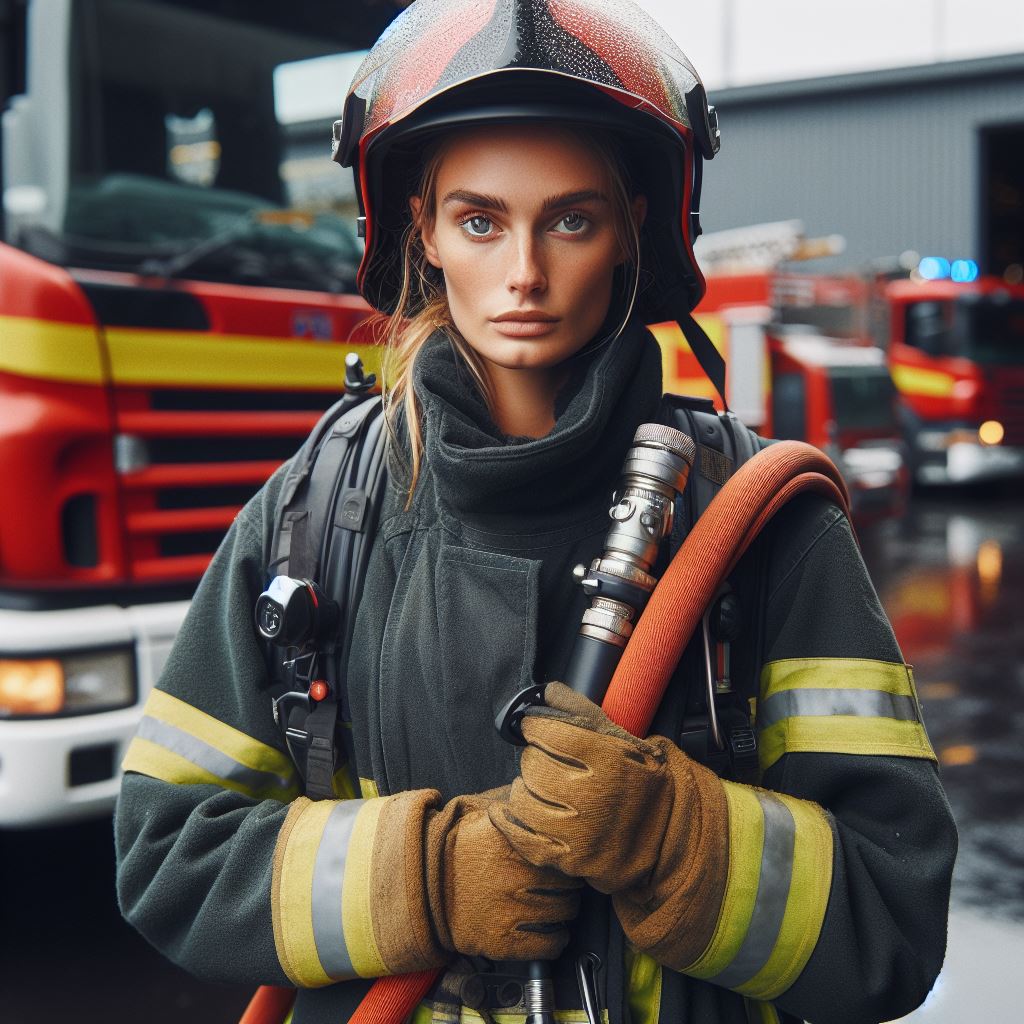Introduction
Technology plays a crucial role in enhancing firefighting efforts, ensuring the safety of both firefighters and the community they serve.
This blog section will explore the significance of technology in firefighting and the unique challenges New Zealand faces in this field.
A. The Importance of Technology in Firefighting Efforts
Technology has revolutionized firefighting by providing innovative tools and equipment that aid in detecting, preventing, and extinguishing fires.
It enables firefighters to have real-time situational awareness and make data-driven decisions.
B. New Zealand’s Unique Firefighting Challenges
Being a country prone to natural disasters, New Zealand faces specific challenges in firefighting.
The diverse landscape, including mountainous regions and extensive forests, requires advanced technology to efficiently combat fires.
New Zealand is known for its frequent wildfires, where technology helps in early detection and swift response, preventing their escalation.
Additionally, volcanic activity and the presence of geothermal areas add complexity to firefighting efforts.
Technological advancements in aerial firefighting, such as drones and helicopters equipped with thermal imaging cameras, improve response time and effectiveness.
The use of GPS-enabled devices aids in navigation through treacherous terrain.
Moreover, New Zealand utilizes technology to enhance firefighter safety.
Advanced personal protective equipment, communication systems, and monitoring devices ensure the well-being of those on the front lines.
In essence, technology plays a significant role in New Zealand’s firefighting efforts.
It enhances prevention, detection, and response capabilities, addressing the diverse challenges the country faces.
Embracing technology continues to improve firefighter safety and minimize the devastating impact of fires.
Personalized Career Consulting
Unlock your potential with expert career advice tailored to your goals. Get personalized guidance and actionable steps toward your dream career in New Zealand.
Get StartedCurrent Technology Used in NZ Firefighting
In recent years, New Zealand’s firefighting efforts have been greatly enhanced with the use of innovative technologies.
These advancements have not only improved efficiency but also significantly increased the safety of both firefighters and the public.
Let’s take a closer look at some of the cutting-edge devices, tools, and equipment currently employed in New Zealand’s firefighting operations:
A. Thermal Imaging Cameras
Thermal imaging cameras have revolutionized firefighting by allowing firefighters to see through smoke and darkness.
These cameras identify heat signatures, enabling firefighters to locate victims and hotspots quickly.
By providing real-time visual information, they assist in decision-making processes during critical situations.
B. Water-Enhancing Technology
New Zealand’s fire service is equipped with high-pressure water systems that effectively combat fires.
These systems can deliver water at extreme pressure, maximizing its effectiveness in extinguishing flames.
Firefighters also benefit from advanced hose technologies that allow for better control and reach.
C. Drone Technology
Drones have become an invaluable asset in firefighting efforts, particularly during large-scale incidents.
Equipped with thermal imaging and high-resolution cameras, drones provide valuable aerial perspectives.
They assist in assessing fire patterns, identifying potential risks, and monitoring the progress of firefighting operations.
D. Personal Protective Equipment (PPE)
The personal safety of firefighters has been significantly improved through the advancements in PPE.
Modern firefighting suits are designed to provide efficient thermal protection and increased mobility.
Transform Your Career with a Professional CV and Cover Letter
Stand out to employers with an ATS-optimized resume and tailored cover letter designed to match your dream role. Let us craft your job application materials for success!
Get StartedThey include self-contained breathing apparatus (SCBA) systems, ensuring a constant supply of breathable air.
E. Communication and Command Systems
Efficient communication systems are crucial for coordinating firefighting operations.
New Zealand’s fire service utilizes advanced command systems that enable real-time information sharing.
These systems allow firefighters to stay connected and make well-informed decisions quickly.
F. GIS Mapping and Predictive Modeling
Geographic Information System (GIS) mapping technology aids in identifying potential risks and planning.
By analyzing terrain, weather, and other factors, firefighters can anticipate fire behavior and plan accordingly.
These predictive models help allocate resources effectively and ensure efficient firefighting strategies.
The implementation of these advanced technologies has led to significant improvements in efficiency and safety in New Zealand’s firefighting efforts.
Firefighters can now respond more effectively, mitigate risks, and save lives.
With ongoing advancements, it is certain that the future of firefighting in New Zealand will continue to benefit from innovative technological solutions.
Read: NZ Fire Service: History and Evolution
Drones in Firefighting
The use of drones in firefighting operations has become increasingly common in New Zealand.
These unmanned aerial vehicles (UAVs) have revolutionized the way firefighters combat fires and provide valuable support in challenging situations.
A. How drones are being incorporated in firefighting operations
Drones equipped with thermal imaging cameras are deployed to gather real-time data on fire behavior, allowing firefighters to make informed decisions.
Boost Your Career with a Standout LinkedIn Profile
Attract recruiters and expand your network with a fully optimized LinkedIn profile tailored to highlight your strengths and professional goals. Let your profile open doors to new opportunities!
Get OptimizedThey provide aerial views, helping firefighters assess the extent of the fire and identify potential hazards from a safe distance.
Drones are used to drop water or fire retardants on wildfires, directly targeting specific areas and preventing further spread.
They can fly into areas that are too dangerous or inaccessible for firefighters, enabling early response and rapid assessment.
B. Benefits and advantages of using drones in firefighting
- Enhanced situational awareness: Drones provide valuable real-time information, increasing the overall effectiveness of firefighting efforts.
- Improved safety: By reducing the need for firefighters to enter hazardous areas, drones minimize the risk of injuries and fatalities.
- Cost-effective: Drones are a cost-efficient alternative to manned aircraft, offering substantial savings in operational expenses.
- Quick deployment: Drones can be launched rapidly, allowing immediate response to wildfires and reducing potential damage.
- Increased efficiency: The use of drones optimizes resource allocation and helps prioritize fire suppression tactics.
C. Specific cases where drones have been useful in New Zealand
In recent years, drones have played a crucial role in firefighting efforts across New Zealand.
Here are a few noteworthy examples:
In 2017, a large wildfire erupted in the Port Hills area of Christchurch.
Drones were instrumental in mapping the fire front and monitoring its behavior, assisting firefighters in containment and ensuring public safety.
A year later, during the Tasman fires in the South Island, drones equipped with thermal cameras detected hotspots amidst heavy smoke, guiding firefighting crews to target extinguishment efforts effectively.
More recently, in 2020, drones provided situational awareness in the huge forest fire that broke out in the Auckland suburb of Swanson, allowing firefighters to efficiently allocate resources and protect vulnerable areas.
In fact, the incorporation of drones in firefighting operations has proven to be a game-changer in New Zealand.
These advanced technologies provide critical support to firefighters, enhancing situational awareness, improving safety, and ultimately minimizing the impact of devastating wildfires.
Read: Firefighting and Ecology in New Zealand
Thermal Imaging and Detection Systems
In the field of firefighting, thermal imaging and detection systems play a vital role in enhancing safety and effectiveness.
These innovative technologies have revolutionized the way firefighters approach and combat fires.
A. Importance of Thermal Imaging and Detection Technology in Firefighting
- Enhanced Situational Awareness: Thermal imaging allows firefighters to see through smoke and darkness, providing a clear view of the fire scene.
- Early Detection of Hotspots: These systems can identify hotspots and areas with extreme temperatures, enabling firefighters to target specific areas.
- Improved Firefighter Safety: By identifying potential dangers, thermal imaging technology helps reduce the risk of injury or death.
- Efficient Resource Allocation: Firefighters can make better decisions by utilizing thermal imaging, ensuring efficient use of manpower and equipment.
B. How Thermal Imaging and Detection Systems Work
Thermal imaging cameras detect heat signatures emitted by objects and convert them into visible images.
This technology is based on the principle of detecting differences in temperature.
These systems capture infrared radiation and produce images known as thermograms.
The thermograms display temperature variations, highlighting areas of intense heat.
Firefighters use these thermograms to identify hotspots within a fire, allowing them to focus their efforts efficiently.
By pinpointing the source of the fire, firefighters can effectively direct water and extinguish it more quickly.
C. Examples of Advances in Thermal Imaging Technology Used in New Zealand
- Real-Time Fire Mapping: New Zealand fire services employ innovative thermal imaging systems that provide real-time mapping of fires, facilitating efficient strategies to control and extinguish them.
- Drone Integration: Drones equipped with thermal imaging cameras have become valuable tools in firefighting, assisting in identifying hotspots and hazards from an aerial perspective.
- Integrated Helmet Systems: Some firefighters in New Zealand now wear helmets with built-in thermal imaging technology, allowing them to detect hotspots while maintaining mobility and protection.
- Smartphone Applications: Certain smartphone applications have been developed to utilize the thermal imaging capabilities of mobile devices, aiding firefighters in their operations.
The New Zealand firefighting sector continues to embrace technological advancements to enhance their response capabilities and ensure the safety of firefighters and the public.
Essentially, thermal imaging and detection systems have revolutionized firefighting by providing enhanced situational awareness, early hotspot detection, and improved firefighter safety.
New Zealand has embraced these advances, utilizing real-time mapping, drone integration, helmet systems, and smartphone applications.
With ongoing research and development, the future holds even more promising advancements in thermal imaging technology, further strengthening New Zealand’s firefighting efforts.
Read: Volunteer vs Career Firefighters in NZ

Communication and Information Management
A. Significance of effective communication in firefighting operations
Effective communication is crucial in firefighting operations as it ensures smooth coordination and saves lives.
Effective communication allows firefighters to coordinate their efforts and respond promptly to changing situations.
It ensures that everyone involved is informed about incident updates, risks, and strategy adjustments.
Real-time communication enhances situational awareness, helping firefighters make informed decisions and prioritize their resources.
Optimizing resource allocation, efficient communication systems ensure deploying the right personnel and equipment.
Moreover, effective communication fosters teamwork and collaboration among firefighters, enhancing overall operational efficiency.
Clear and concise information exchange reduces misunderstandings and minimizes the risks associated with firefighting operations.
B. Overview of communication systems used by firefighters in New Zealand
Firefighters in New Zealand rely on various communication systems to enhance their effectiveness and safety.
- Two-way radios are commonly used for real-time communication between firefighters on the ground and command centers.
- Mobile phones are also essential tools for communication, allowing firefighters to stay connected and receive important updates.
- The use of drones equipped with cameras provides valuable situational awareness, capturing footage that aids in decision-making.
By utilizing advanced information management systems, firefighters can access critical data and adapt their strategies accordingly.
These systems facilitate real-time integration of data from various sources, enabling a comprehensive overview of the incident.
Improved situational awareness empowers firefighters to respond effectively, making the most informed decisions in high-pressure situations.
C. Advancements in information management systems for better situational awareness
Communication systems have undergone significant advancements in recent years for better information management and situational awareness.
- Integrated computer systems enable real-time data sharing, ensuring all personnel have access to critical information.
- Geographic Information Systems (GIS) assist firefighters in mapping fire incidents, identifying hazards, and planning strategies.
- Mobile applications provide valuable information on weather conditions, fire behavior, and evacuation routes.
- Wireless communication technologies enable seamless communication between firefighters across different locations.
Overall, effective communication and advanced information management systems play a vital role in enhancing firefighting efforts.
By constantly embracing technological advancements, firefighters in New Zealand can operate more efficiently and safely, saving lives and protecting communities.
Read: NZ Firefighters: Stress Management Tips
Training and Simulations
A. How technology is used in training firefighters
Technology plays a significant role in training New Zealand’s firefighters.
Through the use of various tools and techniques, technology enables firefighters to enhance their skills and preparedness for real-life situations.
Simulations and virtual reality are particularly beneficial in this regard.
B. Benefits of using simulations and virtual reality in training exercises
Using simulations and virtual reality, firefighters can experience realistic scenarios that mimic actual emergencies.
This allows them to practice their response strategies and decision-making skills in a controlled environment.
By simulating different fire situations, firefighters can better understand the complexities and challenges they may face in the field.
One of the primary benefits of using simulations in training exercises is the ability to replicate real-world scenarios without the associated risks.
Firefighters can safely engage in these simulations and learn from their mistakes without endangering lives or property.
It provides an opportunity for them to explore different approaches and fine-tune their techniques.
C. Specific training programs or tools utilized in New Zealand
In New Zealand, specific training programs and tools have been developed to leverage technology effectively.
1. Fire and Emergency New Zealand (FENZ) Virtual Reality Training Program
One such program is the Fire and Emergency New Zealand (FENZ) Virtual Reality Training Program.
This innovative tool utilizes virtual reality headsets to immerse firefighters in a 360-degree virtual environment, mirroring real-life emergency situations.
The FENZ Virtual Reality Training Program enables firefighters to practice various skills, including fire suppression, search and rescue, and incident command.
Through interactive simulations, firefighters can familiarize themselves with different equipment, techniques, and even navigate through hazardous environments.
This immersive experience enhances their confidence and effectiveness during actual emergencies.
2. BurnSaver Thermal Imaging Trainer
Another tool used in New Zealand’s firefighting training is the BurnSaver Thermal Imaging Trainer.
This device replicates the thermal environment of a structure fire, allowing firefighters to hone their thermal imaging interpretation skills.
By identifying hidden hotspots and mapping fire progression, firefighters can make informed decisions and potentially save lives.
3. Computer-based training (CBT) modules
Additionally, New Zealand has embraced the use of computer-based training (CBT) modules.
These modules provide firefighters with interactive learning experiences, combining multimedia elements such as videos, animations, and quizzes.
CBT modules cover a wide range of topics, including fire behavior, hazardous materials, and incident management, to enhance firefighters’ knowledge and understanding.
The integration of technology into firefighting training has revolutionized the way firefighters are prepared for emergencies.
By incorporating simulations, virtual reality, and specific training programs, New Zealand’s firefighters can develop critical skills, improve response times, and ensure the safety of both themselves and the public.
In a nutshell, technology has significantly transformed the training methods of firefighters in New Zealand.
Simulations and virtual reality enable them to practice and refine their skills in realistic scenarios.
Specific tools and programs, such as the FENZ Virtual Reality Training Program and BurnSaver Thermal Imaging Trainer, enhance their capabilities further.
By embracing such advancements, New Zealand’s firefighters are better equipped to handle emergencies and protect their communities.
Conclusion
Technology plays a crucial role in enhancing New Zealand’s firefighting capabilities.
From drones to thermal imaging cameras, these advancements have revolutionized how firefighters combat fires and save lives.
The use of technology has enabled quicker response times, improved situational awareness, and enhanced firefighter safety.
Looking ahead, the future of technology in firefighting looks promising.
Innovations such as AI-powered firefighting robots and advanced predictive analytics are on the horizon, promising even greater efficiency and effectiveness in firefighting operations.
In closing, the integration of technology has significantly improved New Zealand’s firefighting efforts, making them more efficient and effective.
As technology continues to advance, the prospects for firefighting technology in New Zealand are bright, with the potential to further enhance the safety of firefighters and the communities they serve.




